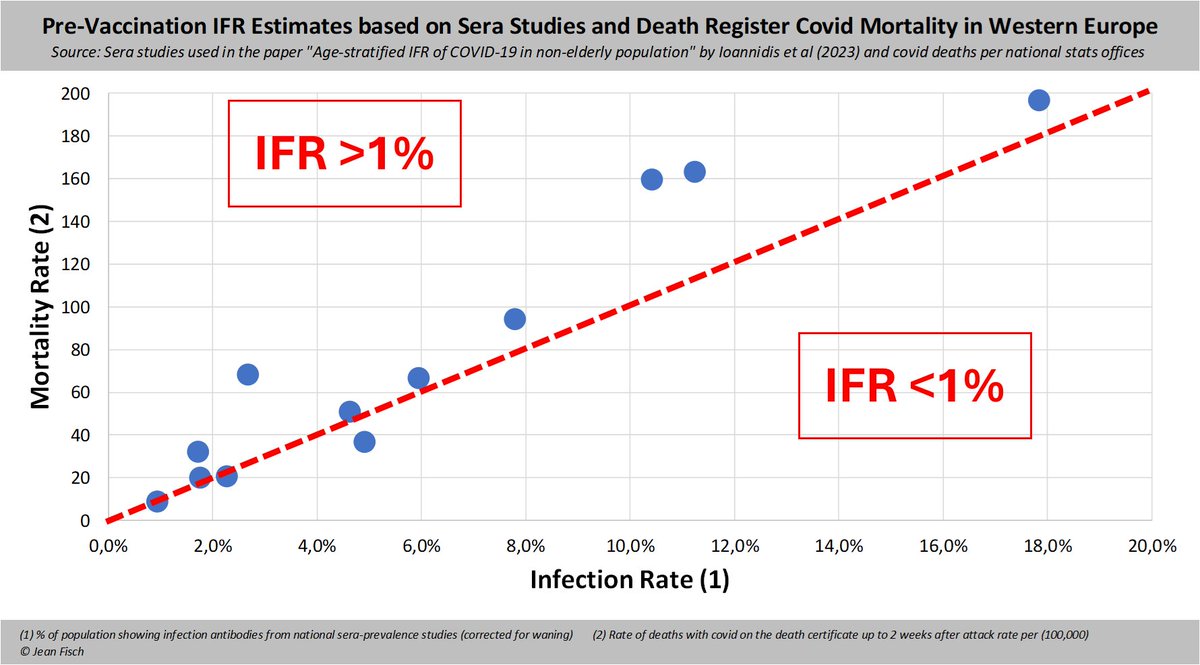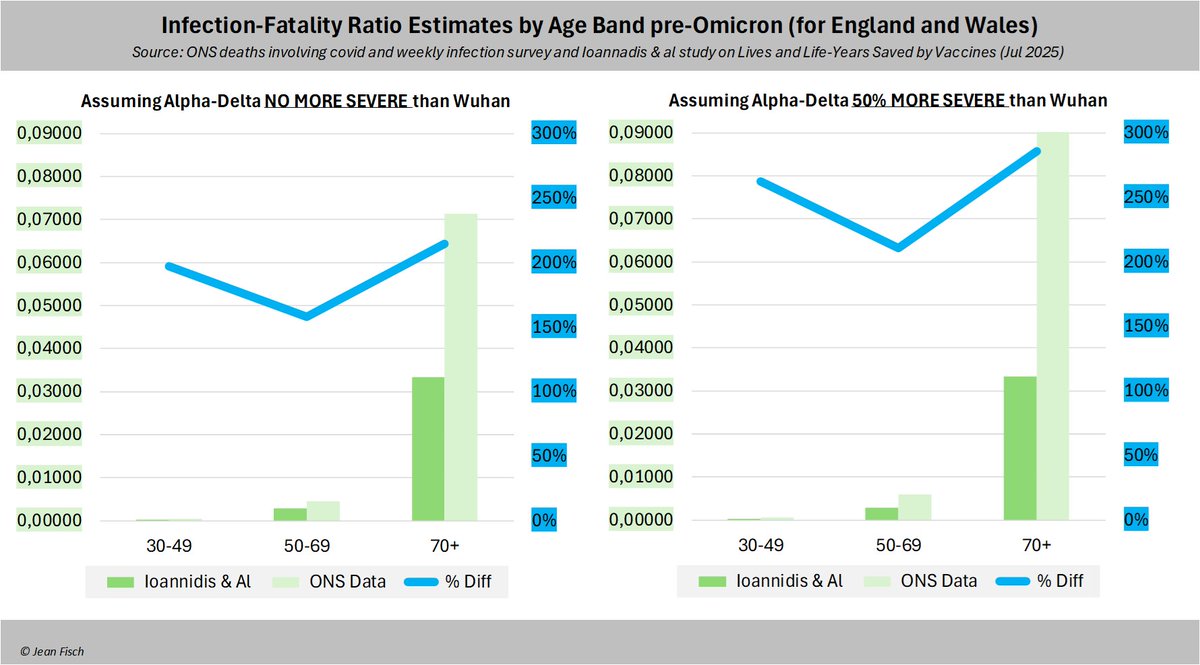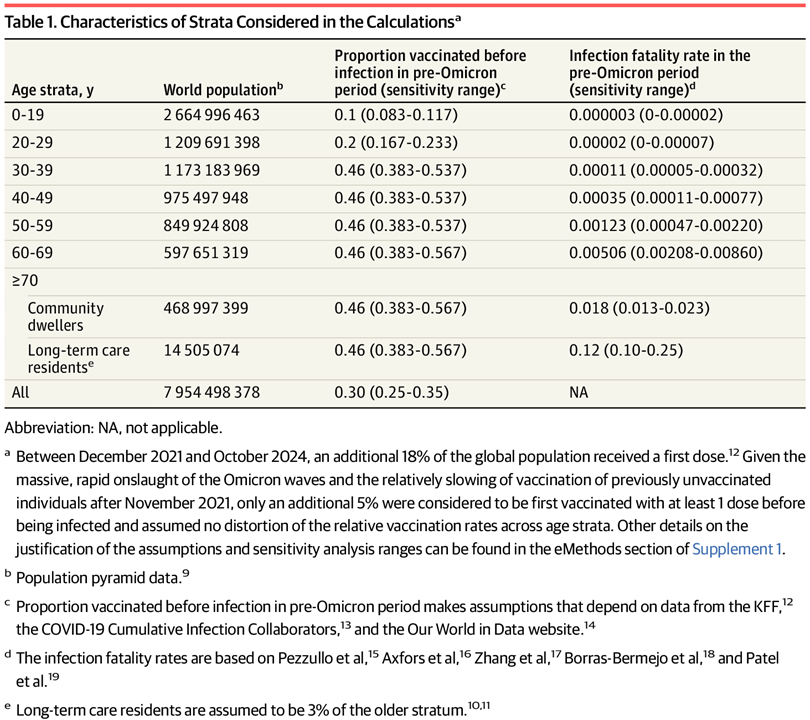
How to get URL link on X (Twitter) App


 Now I took end October 2020 out of a reason: There are two sera studies for the US at that date
Now I took end October 2020 out of a reason: There are two sera studies for the US at that date
 Ioannidis published a piece early 2021 in which he selects 40 sera studies which he considers as good
Ioannidis published a piece early 2021 in which he selects 40 sera studies which he considers as good
https://twitter.com/Jean__Fisch/status/1856378242556670320The conclusion on lives saved depends on the severity of Omicron vs. Delta and Wuhan

 Ioannidis et al rightly split the 70+ into community and care settings
Ioannidis et al rightly split the 70+ into community and care settings

https://twitter.com/RetsefL/status/1917274541216170095I asked the authors about it also because, actually all studies of age-adjusted mortality by vax status show a higher rate among the unvaxed

 @Sciences_Avenir What happened is that the academy
@Sciences_Avenir What happened is that the academy

 Now, if you follow mortality, you will probably say "hey, wasn't 2023 still showing a lot of excess?"
Now, if you follow mortality, you will probably say "hey, wasn't 2023 still showing a lot of excess?"
 Early in the pandemic, Belgium did something I still consider best in class
Early in the pandemic, Belgium did something I still consider best in class
 Now, the UK is the only country which had a weekly random sample of testing in place and therefore knew its weekly infections
Now, the UK is the only country which had a weekly random sample of testing in place and therefore knew its weekly infections
https://twitter.com/PutrinoLab/status/1831314028062261308STATEMENT 1: "incurable chronic disease"

 I still believe that a large part of the "unexplained" excess against pre-pandemic trends is actually just a "shift forward of the annual curves" from pink to blue (due to changes in immunity structures and covid being more contagious)
I still believe that a large part of the "unexplained" excess against pre-pandemic trends is actually just a "shift forward of the annual curves" from pink to blue (due to changes in immunity structures and covid being more contagious)

 Everything comes out of the ONS winter infection survey
Everything comes out of the ONS winter infection survey

 The analysis is made more complex by the fact that the periodic infection surveys
The analysis is made more complex by the fact that the periodic infection surveys

 @rivm @statisticscbs Just to hammer home how much NLD is on another planet: Here is the annual growth rate of ASMR in Western Europe
@rivm @statisticscbs Just to hammer home how much NLD is on another planet: Here is the annual growth rate of ASMR in Western Europe

 Just for clarity, I think it's vital to check for signals of covid vaccine induced deaths simply because there is risk eg
Just for clarity, I think it's vital to check for signals of covid vaccine induced deaths simply because there is risk eg
 Just to make my point crystal clear
Just to make my point crystal clear
https://twitter.com/Jean__Fisch/status/1625808599590088706

 Scotland provides data by occurrence by age on a monthly basis which allows one to make a proper assessement against expected deaths from population and mortality trends
Scotland provides data by occurrence by age on a monthly basis which allows one to make a proper assessement against expected deaths from population and mortality trends
https://twitter.com/MaryanneDemasi/status/1656806361844572160In particular, the impact of an "R0=2.5 / IFR >>0.5%" virus is such that no shielding mecanisms was deemed sufficiently secure to let circulation run high without taking uncalculated risks on the death toll
https://twitter.com/Jean__Fisch/status/1564237261851467776

 Quick add ons to forecome obvious questions
Quick add ons to forecome obvious questions